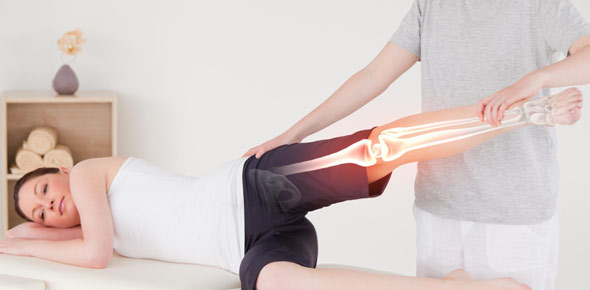Axilla And Upper Limb Quiz!
-
The axillary artery continues as a brachial artery.
-
True
-
False
-
Explore the Axilla and Upper Limb with our engaging quiz! Test your knowledge on topics like the axillary artery, brachial plexus, rotator cuff muscles, and nerve distributions. Perfect for students and professionals aiming to sharpen their anatomical understanding and clinical skills.
(202).jpg)
Quiz Preview
- 2.
The rotator cuff muscles are supraspinatus, infraspinatus, subscapularis and teres minor.
-
True
-
False
Correct Answer
A. TrueExplanation
The rotator cuff muscles consist of four muscles: supraspinatus, infraspinatus, subscapularis, and teres minor. These muscles are responsible for stabilizing and rotating the shoulder joint. Therefore, the statement that the rotator cuff muscles are supraspinatus, infraspinatus, subscapularis, and teres minor is true.Rate this question:
-
- 3.
The nerve of the posterior compartment of the forearm is the radial nerve.
-
True
-
False
Correct Answer
A. TrueExplanation
The radial nerve is indeed the nerve of the posterior compartment of the forearm. It is responsible for providing motor innervation to the extensor muscles of the forearm, as well as sensory innervation to the skin on the posterior aspect of the hand and forearm. This nerve is important for various functions, such as extending the wrist and fingers, and it can be affected in conditions like radial nerve palsy.Rate this question:
-
- 4.
The median nerve is in the cubital fossa.
-
True
-
False
Correct Answer
A. TrueExplanation
The cubital fossa is a triangular depression in the anterior part of the elbow. It is bounded by the brachioradialis muscle, the pronator teres muscle, and a line connecting the medial and lateral epicondyles of the humerus. The median nerve, along with the brachial artery and the tendon of the biceps brachii muscle, passes through the cubital fossa. Therefore, the statement that the median nerve is in the cubital fossa is true.Rate this question:
-
- 5.
The carpal tunnel is formed anteriorly at the wrist by a deep arch formed by the carpal bones and the flexor retinaculum.
-
True
-
False
Correct Answer
A. TrueExplanation
The carpal tunnel is indeed formed anteriorly at the wrist by a deep arch created by the carpal bones and the flexor retinaculum. This anatomical structure allows for the passage of various structures, including the median nerve and the flexor tendons of the hand. Therefore, the statement is true.Rate this question:
-
- 6.
The brachial plexus begins and ends in the axilla.
-
True
-
False
Correct Answer
A. FalseExplanation
The brachial plexus is a network of nerves that originates from the spinal cord in the neck region and extends into the axilla (armpit) and upper limb. It does not begin or end in the axilla. Instead, it starts in the neck and extends down into the upper limb, providing innervation to the muscles and skin of the arm. Therefore, the statement that the brachial plexus begins and ends in the axilla is incorrect.Rate this question:
-
- 7.
Muscles at the posterior compartment of the arm flex the elbow joint.
-
True
-
False
Correct Answer
A. FalseExplanation
The statement is false because the muscles at the posterior compartment of the arm are responsible for extending the elbow joint, not flexing it. Flexion of the elbow is primarily controlled by the muscles at the anterior compartment of the arm, such as the biceps brachii.Rate this question:
-
- 8.
The muscles of the posterior compartment of the forearm are associated with: 1) Movement of the wrist 2) Extension of fingers 3) Pronation
-
True
-
False
Correct Answer
A. FalseExplanation
The muscles of the posterior compartment of the forearm are not associated with pronation. They are primarily responsible for extension of the wrist and fingers. Pronation is controlled by muscles in the anterior compartment of the forearm. Therefore, the statement is false.Rate this question:
-
Quiz Review Timeline (Updated): Mar 21, 2023 +
Our quizzes are rigorously reviewed, monitored and continuously updated by our expert board to maintain accuracy, relevance, and timeliness.
-
Current Version
-
Mar 21, 2023Quiz Edited by
ProProfs Editorial Team -
May 06, 2015Quiz Created by
Ykaan2000
Upper Limbs Anatomy Quiz
Hello and welcome to this short and fun 'Upper Limb Anatomy Quiz'. We've created this quiz to test your understanding of upper limb anatomy and other related body...
Questions:
10 |
Attempts:
15454 |
Last updated:
Oct 20, 2024
|
AXILLA
Explore the anatomy of the axilla with specific focus on its structure and contents. This quiz assesses knowledge of its boundaries, contents, and anatomical relationships,...
Questions:
9 |
Attempts:
4070 |
Last updated:
Mar 21, 2023
|
7. AXILLA & UPPER LIMB- ORMAN
8 SORUDAN 6 SORU VEYA DAHA AZ BİLDİYSEN BİR DAHA OKU!
Questions:
8 |
Attempts:
197 |
Last updated:
Mar 21, 2023
|
Special Tests Shoulder Elbow Wrist Hand(TherEx)
This quiz assesses knowledge of special tests for diagnosing pathologies in the shoulder, elbow, wrist, and hand. It includes Ludington's, Speed's, Yergason's, and Apprehension...
Questions:
13 |
Attempts:
689 |
Last updated:
Mar 22, 2023
|
Elbow, Forearm, Wrist, Hand (TherEx)
This quiz focuses on the therapeutic exercises and assessment of the elbow, forearm, wrist, and hand. It tests knowledge on joint articulations, muscle length, inflammation...
Questions:
38 |
Attempts:
467 |
Last updated:
Mar 21, 2023
|
Quiz 4- Wrist And Hand
Quiz 4 - Wrist and Hand explores the primary movers in wrist and hand movements, the functional roles of muscles, and clinical symptoms related to nerve damage, enhancing...
Questions:
26 |
Attempts:
2593 |
Last updated:
Jun 07, 2024
|
 Back to top
Back to top







